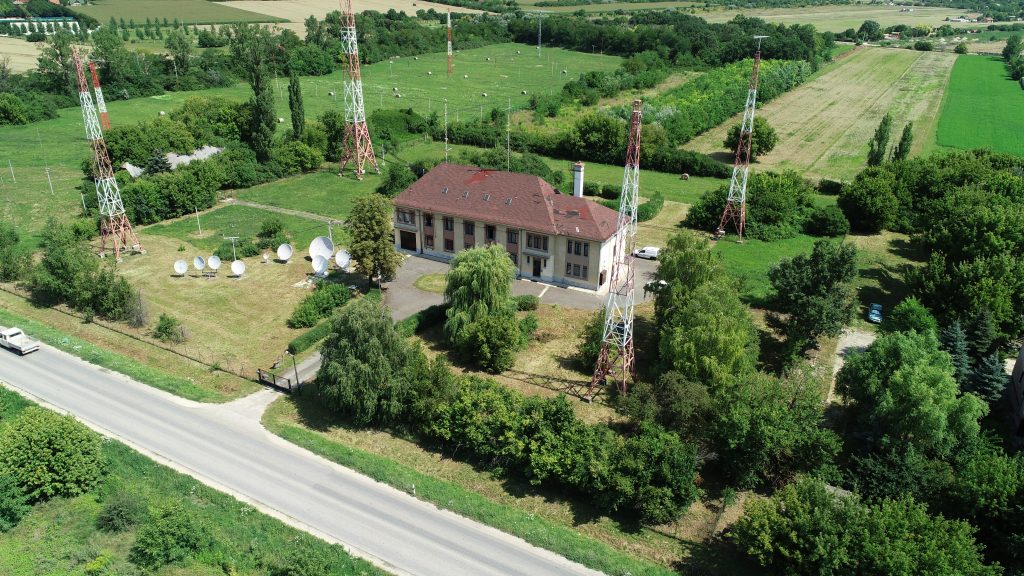Europe’s longest running telecommunications site celebrates its centenary.
Antenna Hungária Ltd. and the professional community celebrated the 100th anniversary of the Tárnok measuring station with the unveiling of a commemorative plaque. The building complex, which celebrates its centenary this year and its equipment have been upgraded with new functions and services over the decades, so the station continues to be an important cog in the wheel of modern telecommunications service.
Tárnok began operating as a radio telegraph and receiver station in 1924. From 1949 it was also responsible for monitoring and measuring the signals of domestic radio transmitters. In the heyday of radio telegraphy in the 1960s, it was in contact with 17 European and overseas counter stations, and from the 1980s it provided reception for MAHART (Hungarian Shipping Co.) cruise ships too. It has been a member of the International Telecommunication Union since 1985 and operates as an international measuring station since then. Antenna Hungária Ltd. celebrated the 100th anniversary of the station with the unveiling of a commemorative plaque.
Speaking at the inauguration ceremony, Zsolt Árki, Technical Director of Antenna Hungária, said, “This is the first time in the history of Hungarian telecommunications that we can celebrate the 100th anniversary of a key facility. Tárnok has played an important role in the development of telecommunications in Hungary. Construction began in 1923, and the first customer station was commissioned in April 1924. The location of the station was chosen to be free of any electrical interference, far from towns and cities, but at the same time convenient for long wave reception. The station is unique in the world in that, although technology has changed and the frequency band has been extended over the years, it has remained a receiving station throughout its 100-year life, serving its original purpose”.
During the Second World War, Tárnok Station also underwent significant changes. Construction of an air raid shelter began in 1939 and was completed in 1941. Separate receivers were installed for the bomb shelter, and the station was upgraded with new, modern equipment manufactured by Zelenka. By the early 1940s, 24 different types of equipment were in use for long and short-wave telegraph reception.
After the Second World War, despite the station being looted and its equipment removed, it was reopened in 1947 thanks to the sacrifices of its staff. During the reconstruction of the heavily damaged station, several old and new receivers were installed, including equipment purchased from the US war material, which enabled the restoration of telecommunication services. In 1949, the Tárnok radio service was extended to include measurement and control functions, and it was possible to measure frequency and field strength.
In the 1970s, frequency measurements were greatly improved, making the data more accurate and reliable. The station was equipped with a variety of antenna systems, enabling it to measure frequencies below and above 30 MHz. In the second half of the 1980s, the station’s capabilities took another leap forward with the addition of field strength measurements and fault monitoring.
Today, in addition to the station’s automatic and semi-automatic measurement systems, several modern measurement devices provide continuous and accurate data. The station’s infrastructure continues to provide modulation analysis of the various FM radio transmitters and to measure and record the signal levels and bandwidths of the DVB-T/T2 channels. The station also receives and processes data from several remote measurement sites. The site also performs other special tasks, including acting as the Hungarian monitoring station for the AMOS satellite.
The station has played an important role in the life of the Hungarian telecommunications industry since its opening in 1924. Its importance in providing the first long-wave reception and its revival after the Second World War, as well as the technological developments of the 1970s and 1980s, have enabled Tárnok to remain an active and important player in the telecommunications infrastructure to nowadays. Equipped with modern measuring equipment and remote-control systems, the station continues to provide key data on national and international telecommunications networks, thus securing Hungary’s place in the global communications space.

